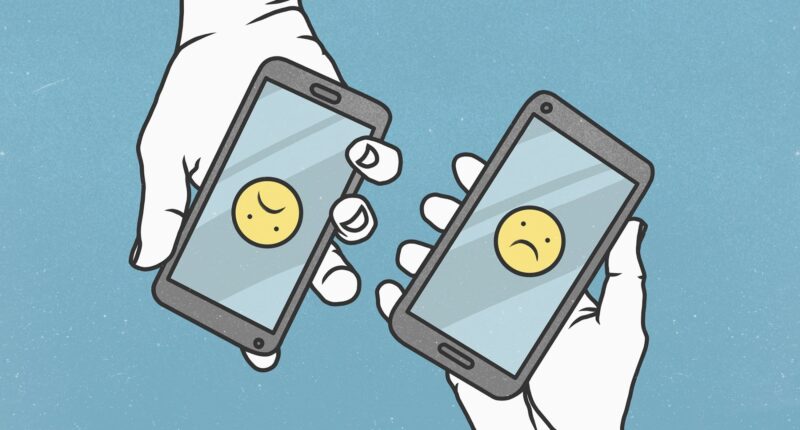
Opinions expressed by Entrepreneur contributors are their own.
Too often, organizations take different approaches to solving employee and customer dissatisfaction. What if these two problems are actually interwoven? Dissatisfaction is a more interconnected experience than businesses realize, and it often is not being solved holistically or fully.
In truth, customer satisfaction has plummeted in the past four years to lows not seen in 17 years. According to the American Customer Satisfaction Index’s (ACSI) 2023 report, there has been a sharp decrease in customer satisfaction levels beginning in 2019 and extending into 2022.
The report also stated, “As of the fourth quarter 2021, almost 80 percent of the companies failed to increase the satisfaction of their customers since 2010.” As customers have continued to struggle with their interactions with companies, it’s important to consider how your employee dissatisfaction is affecting your customer experience.
Related: Happy Employees Create Happy Customers
Viewing unhappiness as a whole: For the customer and the employee
Typically, the two problems are relegated to separate silos in separate functions within an organization, such as the product development and customer service departments. When employees are dissatisfied, they create customer dissatisfaction and vice versa. Let’s walk through one example of their entanglement.
Employees in product development don’t feel tied to the organization’s greater purpose and lack a sense of belonging. As a result, their bonds between each other and the organization start fraying, which creates more disconnection, distrust and, ultimately, minimal effort at work. As employees disconnect, they may stop sharing critical knowledge or insight into their organization’s products and services, which might lead to reduced innovation and increasing misalignment with customers. This can lead to eventually becoming irrelevant in the marketplace.
From the customer’s perspective, they were initially satisfied with the products and services. As time moves on, however, they find the organization is not evolving with their needs. They feel less inclined to share feedback on how they would like products to evolve as they no longer meet their purpose. Their sense of ownership in product development dwindles and usage declines.
Products and services that grow irrelevant to customers can lead to customer disengagement, which can leave employees in the dark without valuable customer feedback. This lack of input can fester among employees, leading to confusion about their individual purpose, the organization’s purpose and how they fit in. It can become a downward spiral.
Separately, customer dissatisfaction and employee dissatisfaction are two very expensive problems. According to Gallup’s State of the Global Workplace: 2022 Report, “employees who are not engaged or who are actively disengaged cost the world $7.8 trillion in lost productivity.” This equals 11% of the global GDP.
How many dissatisfied customers affect bottom lines is anyone’s guess. It’s easily in the hundreds of trillions of dollars. Since one usually doesn’t exist without the other, the combined expense of unhappy workers and customers can wreak havoc on any business if not approached strategically.
The first step is a mindset shift. Reframing how you think about dissatisfaction itself is crucial to identifying, architecting and developing solutions to address customer and employee dissatisfaction. We need to explore the link in our value chains. Asking one simple question starts the process: How can we create meaningful feedback loops that impact the interconnectivity between the employee and customer?
Related: How to Build True Resilience Amid a Changing Business Landscape
1. Assess the situation at hand with an assessment tool
We need to determine the change needed for employees. What are the sources of our employee dissatisfaction? Using the example discussed earlier, product development employees may need purpose activation to refine and align on the strategic journey. They also might want to refresh the strategy articulation by clarifying product charters. A simple internet search for “assessment tool employee satisfaction” brings up dozens of possible solutions.
What actions are needed to lead to an increased sense of meaning and trust? One option is an assessment tool that’s designed to get to the root of employee dissatisfaction. This type of survey helps to uncover key areas of alignment and misalignment in employee brand perception and experience along eight vectors. To get to customer dissatisfaction, evaluate and articulate the customer’s “jobs to be done” and analyze if and how their desired experience is being met.
2. Strategize how to address employee and customer dissatisfaction cohesively
After the gaps in employee satisfaction have been assessed in the current state, strategize what the future state would mean for the customer. Does the future state of employee satisfaction counter or support customer needs? Are there any misalignments or conflicts?
Journey maps and personas provide clarity on complex, non-linear journeys of employee and customer satisfaction. Where do employee and customer dissatisfaction occur? Identify business model changes that can improve employee satisfaction and/or improve customer satisfaction, such as enabling workers to operate in a structure that inspires as they make decisions about customers.
Related: Customer Journey Maps: The North Star to Digital Transformation
3. Plan out how to build alignment within your company
Decide what investments to make in employee and customer satisfaction to foster alignment or reduce conflicts in interconnectivity. Build alignment internally with employees so they are empowered to improve customer satisfaction end-to-end across the organization’s value chain.
Adobe is an example of a company that puts heavy emphasis on people as its most important asset: When people feel respected and included, they can be more creative, innovative and successful. Adobe has launched a number of initiatives aimed at making the company a great place to work, which has improved the customer experience. Beyond culture and diversity, Adobe also prioritizes career development to foster happier, more satisfied employees.
Take time to thoroughly explain who you are as an organization and what your renewed customer experience is to employees. Enlighten employees on the interrelated nature of dissatisfaction so they may join in solving it holistically. Consistency across and within each interlinked employee and customer touchpoint on the customer journey is what creates and maintains both employee and customer satisfaction.
This article is from Entrepreneur.com









